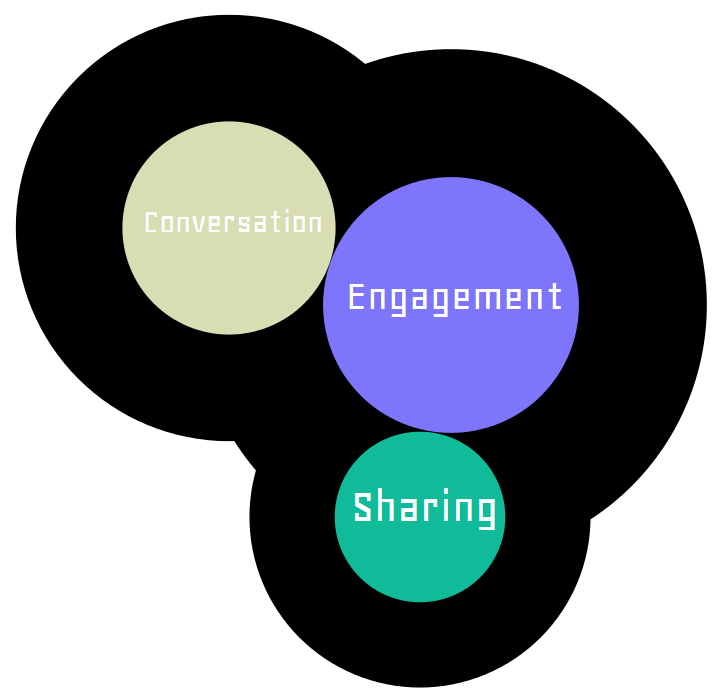Social media: Here today, growing tomorrow
I was recently approached by a country manager of a large food franchiser who asked me “what is with this social media?” A further conversation ensued highlighting how an older generation might not understand the implications and benefits of what social media entails. Rather than being a fad, social interactions are increasingly becoming a standard in the way our lives and consequently business is conducted. Moreover, a recent webinar, B2B Commerce in a Customer Driven World, hosted by IBM addressed how customers online in business to consumer environments are shaping how business to business companies now conduct their operations. In particular, users are accustomed to using elements available in business and consumer sites in their personal lives, like reviews and rating services, and are demanding them from all their suppliers.
 In previous blog posts, I mentioned how cloud computing and the web are incorporating social elements into their fabrics; evolving into their second versions. For now social media is defined by Webster’s dictionary as “forms of electronic communication (as Web sites for social networking and micro-blogging) through which users create online communities to share information, ideas, personal messages, and other content (as videos) .” However, this definition encompasses more technical matters, while social media is really defined by three intertwined main pillars: Engagement, Sharing and Conversations.
In previous blog posts, I mentioned how cloud computing and the web are incorporating social elements into their fabrics; evolving into their second versions. For now social media is defined by Webster’s dictionary as “forms of electronic communication (as Web sites for social networking and micro-blogging) through which users create online communities to share information, ideas, personal messages, and other content (as videos) .” However, this definition encompasses more technical matters, while social media is really defined by three intertwined main pillars: Engagement, Sharing and Conversations.
Engagement
Engagement aims to develop a relationship between individuals and a company by catering to needs discovered through a process of active listening and an honest approach to providing solutions.
- Listening: Listening is the core element of this process; companies need to assess where their target market is located, who are the players partaking in these social circles and what are their interests and requests. Companies should cater to the reason users are spending time engaging in this community by determining the value they seek. Companies can start engaging users once adequate observations have determined the key players and the value community members seek.
- Value and key players: Value must always be delivered to these communities and delivered as a tailored solution to each community member. Previously, companies thought they could achieve the largest impact in social circles by catering solely to the key players wielding the most influence within the community. These key influences are sometimes labelled as thought leaders (popular bloggers) or as emergent experts (knowledgeable users who exert the largest influence within the community). However, companies can benefit the most by focusing efforts to deliver value to the community at large while acknowledging and respecting these key individuals’ credibility and authority.
- CRM and Product Development: Dell has done a great job engaging consumers with user input for product development suggestions through their Ideastorm site and by bringing back call-centres to North America based on user complaints listed in online postings. The Dell example also proves how social media has become a CRM tool to determine and deliver value to consumers.
- Soliciting: Companies can promote engagement by encouraging mash-ups and idea generation by embracing out of the box thinkers. Additionally, conversations can be initiated by bringing in external content or testing out product development suggestions. However, the whole engagement process is based on sharing content and through conversations.
Sharing
Sharing should encompass the famous golden rule (to share without expecting in return) yet should strive to achieve these three main roles:
- Sharing between users: Companies can put in sharing buttons linked to social networking sites to transmit user interests for their site or specific products for promotional purposes. The most popular sharing buttons are Facebook and Twitter, yet other buttons may be more relevant depending on where your users are engaging online (i.e Youtube and social bookmarking sites like Digg or Stumbleupon are also popular).
- Sharing between the company and users: Social media circles are a excellent way to push out a marketing message to an online community but they are generally not well received and lack engagement. Users need to trust companies, so all messages should promote the brand in a positive, consistent and transparent manner. Companies can respond to users directly and share stories to help users understand them by bringing the user into the companies’ own community and operations. Some clothing sites have strengthened their relationships with consumers by broadcasting YouTube videos of their photo-shoots or a behind the scenes look at the company and its people. Apple in particular has created a whole cult centred around Steve Jobs, where his blog posts help bring users into the Apple community. Additionally, companies can engage with users on Twitter directly for support issues or general queries. WhatsApp, a popular messaging service on mobile phones, uses Twitter to broadcast application issues and is a great way to directly relay support messages to users.
- Sharing between the user and the company: Companies should create platforms or areas for user generated content like competitions, product suggestions and reviews, which encourages users to share among themselves. As a result, users develop a greater sense of trust and loyalty towards the brand as they become a part of its development.
Conversations
Conversations take many different forms and have varying outcomes, yet should be defined by these main characteristics:
- Personalization: People like to be spoken to directly. In every attempt, try to engage in conversations that address users personally and offer relevant value to that specific user. Additionally, some specific users concerns may be symptoms of problem suffered by a larger and silent offline majority.
- Honesty: Social media is an interactive conversation far removed from traditional marketing where messages are pushed onto the general public. Companies no longer can control messages online broadcasted by others, and should not attempt to control conversations. As such, users will attack companies when they lie, cover-up or even chose to ignore issues. The best course of action is to acknowledge facts quickly while being honest and humble when errors occur; users are more likely to forgive when an error is recognized and corrective action has been attempted. In the end users will reward honestly with brand loyalty and word of mouth promotion.
- Appreciation: Users are taking time out of their lives to express opinions and interests, so always be thankful for their efforts and do so by acknowledging them and their actions. Companies can assess a great deal about their company and products through comments and product reviews. In fact, social communities are more relevant than focus groups for product feedback and brand sentiment. Thus, companies should acknowledge consumers online engagement, and respond to both positive and negative criticisms with gratitude.
Social Media Online vs Offline
Social media is a great way to engage in conversations and promote sharing within an existing community or one a company creates. However, online conversations and communities are different than their offline counterparts. The best strategy is to listen, discover each ones value, and cater to both communities while attempting to bring them both closer together.
Social media is an every changing environment as users change and communities evolve along with their corresponding value drivers. Companies need to continually maintain conversations with their customers to stay ahead of their competitors. By engaging within social media communities, companies can especially benefit when it comes to product development, brand loyalty and word-of-mouth promotion.



I never thought of it that way, well put!
Thanks for using the time and effort to write something so interesting.
Thanks for all your comments